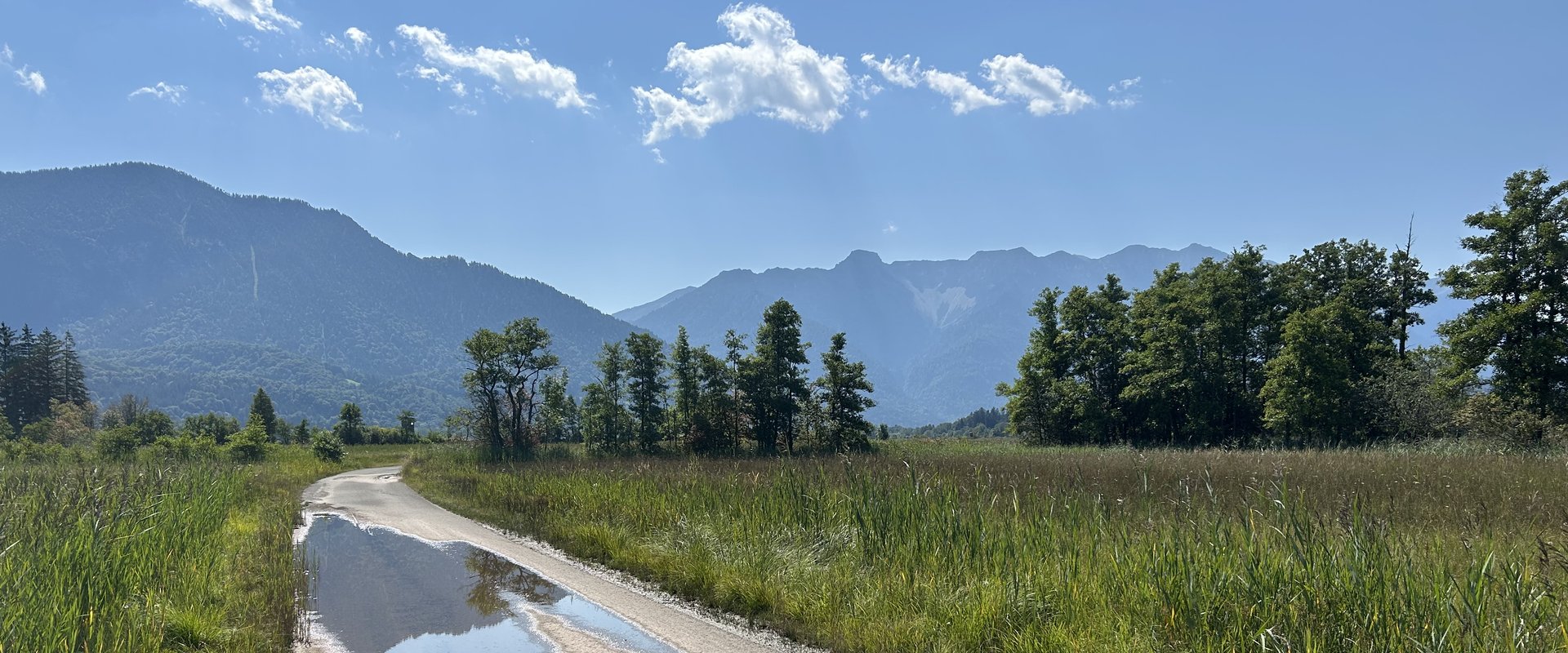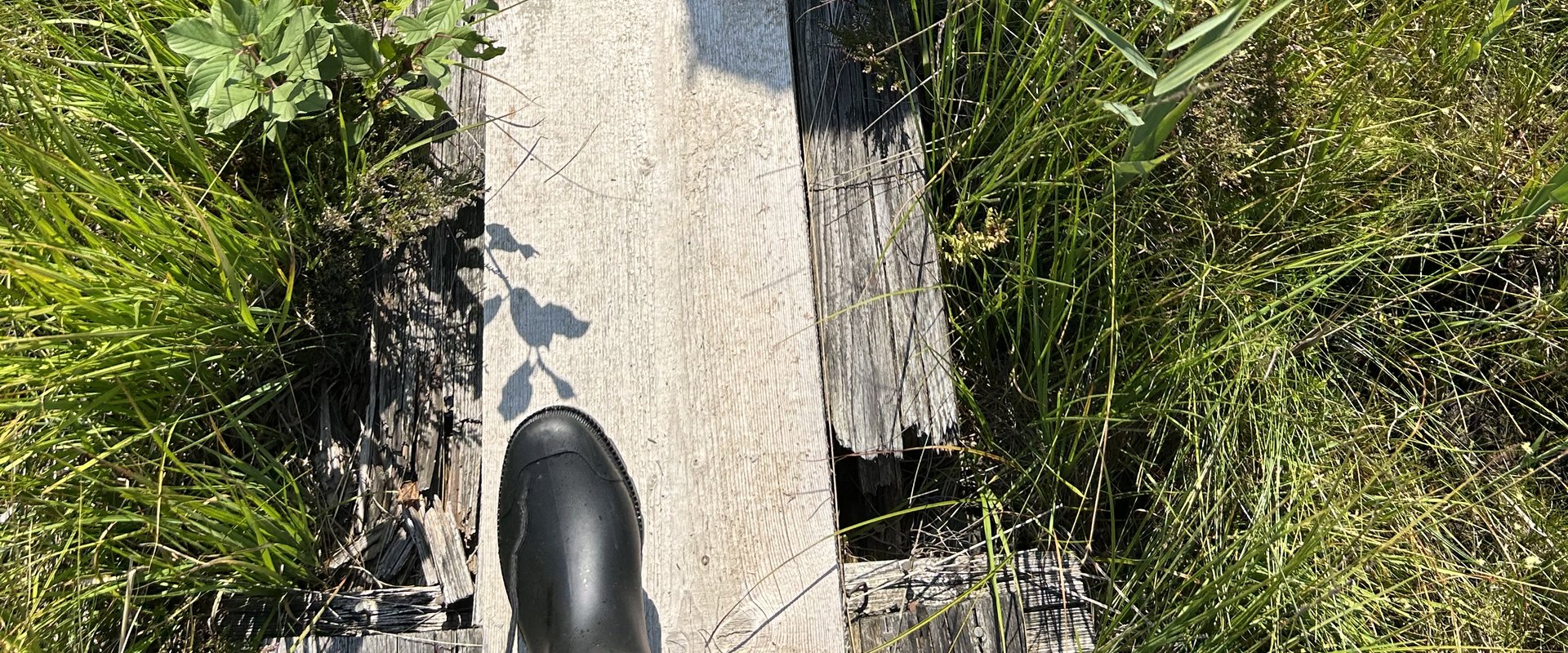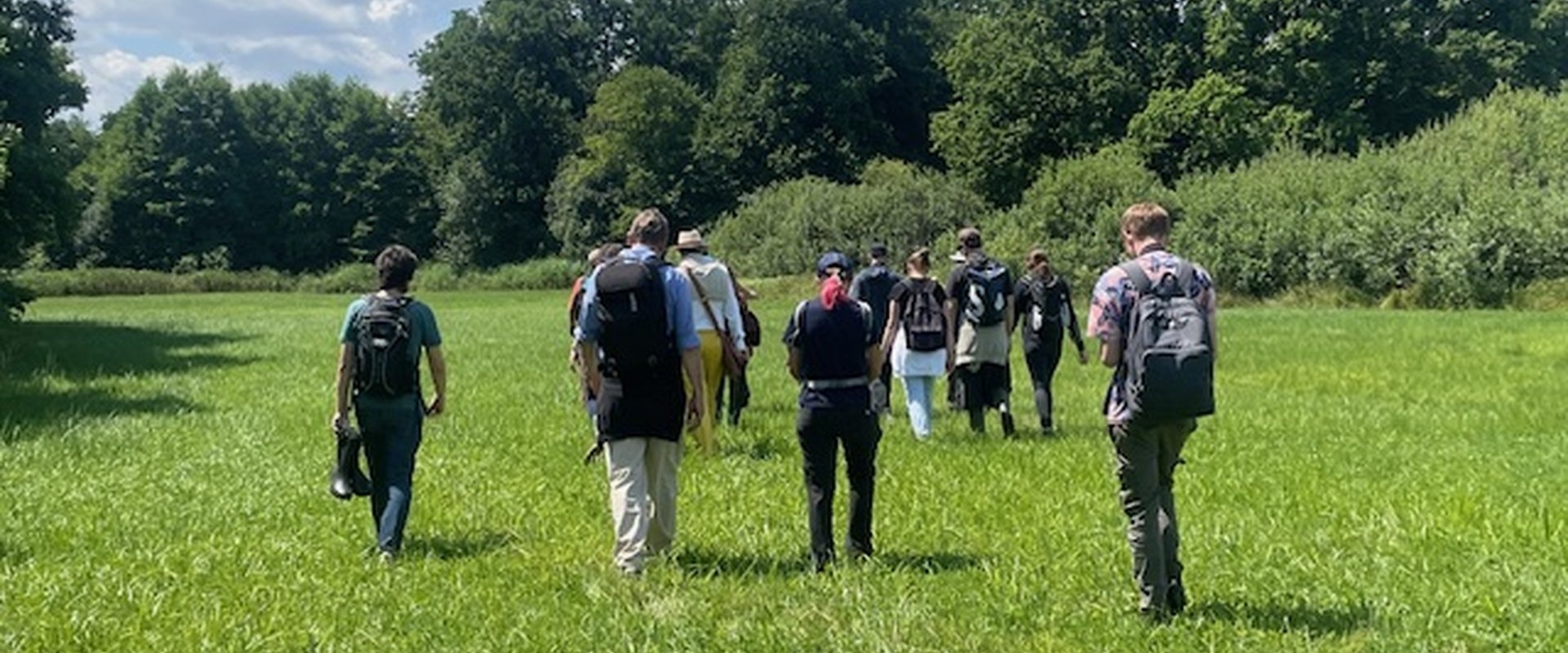Semester throwback
The first event in which the working group participated was the Dies Academicus at the University of Augsburg. The individual sub-projects on the history of wetlands were presented for the first time as part of the poster exhibition ‘Insights into Science’ in the foyer of the Faculty of Law. The working groups semester ended on 9-10 October 2025 with the workshop ‘Testing the Ground. Histories from the Quaking Zone,’ held at the Science Centre for the Environment (WZU). Together with project partners Prof. Jakob Vogel (Sciences Po), Prof. Ludolf Pelizaeus (University of Picardie Jules Verne), Emily O'Gorman (Macquarie University), Kira Meyer (University of Kiel) and Pietro Omodeo (Ca' Foscari University of Venice), the working group refined the concept, methodology and content of the individual projects. The working group is particularly grateful to Ralph Neumeier from the State Office for Environmental Protection for his technical and scientific insights. The workshop concluded with another excursion to a nearby moor. In Haspelmoor, the working group met Toni Drexler and Alfred Beheim from Lebensraum Haspelmoor e.V. They reported on their association's work and showed us their information board and the artwork ‘meMOORial’. In addition to these events, the semester was marked by many substantive working meetings in which the working group coordinated and further developed both the larger methodological-theoretical framework and the individual projects. It was therefore a very productive semester in which not only theoretical work was done, but also many practical experiences were gained on and with wetlands. The working group would like to thank its external project partners for many great guided tours through various wetlands and for their important constructive feedback on the research project.
Summer semester 2025
With the winter semester 2025/26 already in full swing, the ‘Thinking with Wetlands’ working group can look back on a successful summer semester. It was the first semester in which the group received SEED funding from the University of Augsburg, which enabled it to significantly expand its work.
As part of the excursion ‘Wetlands on the Paar. The Unterbernbach bird sanctuary’, the working group visited one of the landscapes we are studying for the first time. The trip was organised and carried out with students. On site, Stefan Höpfel and Patrick Kunze from the Landesbund für Vogel- und Naturschutz Aichach-Friedberg guided us through the area. They showed us oxbow lakes, wet meadows and a starwort-oak-hornbeam forest, as well as the plants and animals living there, and reported on their work at the Landesbund für Vogel- und Naturschutz (LBV).
The working group also presented its activities at the University of Osnabrück. As part of the ‘Research Colloquium on Early Modern History,’ David Gottfried, a student assistant in the working group, gave a lecture entitled ‘The Drainage of Peatlands as a Project of Economic Enlightenment.’
In the summer, part of the working group joined a geography field trip to the Murnauer Moos. Annette Straub from the Chair of Physical Geography with a focus on climate research showed us the largest contiguous, near-natural moorland area in Central Europe. This gave the working group valuable insight into scientific research on wetlands, which forms the basis for the environmental history of these natural areas.
The working group participated with a poster at the Bukowina Institute's stand at the Historians' Day in Bonn. The focus was on the two (South) Eastern European projects on the moor baths of Karlsbad and soil improvement in Bukovina.




